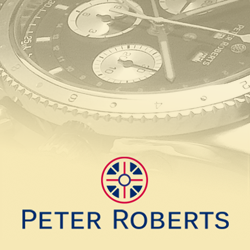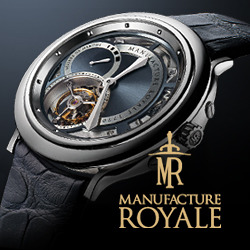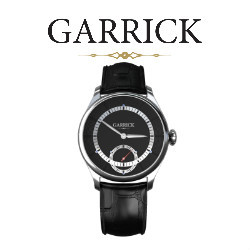Watch companies, especially the most prestigious ones, choose their automotive alliances with care. Think Girard-Perregaux and Ferrari, Bulgari and Cadillac or Breitling and Bentley. Some are natural partners, some of the marriages may be ones of convenience, but brands involved in such liaisons pay close attention to the collaborators’ standing and prestige, as well as the quality of their wares. The link between a revered, revived name like Bugatti and a recently-arrived auteur such as Michel Parmigiani isn’t as apparent as that of Girard-Perregaux and Ferrari (G-P’s Gino Macaluso was a championship rally driver and Italian racing hero) but the spiritual links are there.
Parmigiani Fleurier built up an enviable reputation as a first-rank watch house in an embarrassingly short time; it’s been trading as a ‘manufacture’ only since May 1996. Part of the reason that Parmigiani Fleurier earned the respect of watch lovers so quickly was Michel Parmigiani’s status as one of the world’s foremost restorers of irreplaceable Breguet clocks and watches. In keeping with the standards of Abraham Louis Breguet, Michel Parmigiani decided from the outset to produce watches only for those with the most refined tastes…as did Ettore Bugatti with motorcars. Not surprisingly, Bugatti himself was a Breguet aficionado. [See below, “Bugatti’s Other Timepieces”.]
After a number of failed attempts at reviving the Bugatti name, it looks like the greatest of the pre-war automotive legends is back – not least because the force behind the revival is Volkswagen Group. In 1998, Volkswagen acquired the name to add to its prestige line-up, alongside Bentley and Lamborghini. Volkswagen chose well: Bugatti – the name could only stand for a supercar – was to pre-WWII motoring what Ferrari is to the second half of the 20th Century and the 21st.
Ettore Bugatti was a true renaissance man. When the local electricity board angered him, he made his own generator. To tour his factories, he produced his own electric cart. He lived by the adage, ‘If it looks right, it is right.’ And although time caught up with Bugatti, his conservatism allowing rivals to surpass him in the 1930s, he still managed to produce the most successful racing car of all time in the Type 35, the most beautiful of all time in the Type 57 Atalante, and the most opulent of all time in the Type 41 Royale – 12 litre engine and 7ft from windscreen to radiator cap.
Volkswagen clearly understands the qualities that make a Bugatti a Bugatti, not least being Ettore’s refusal to compromise. Thus, we can assume that the Bugatti Veyron, due in late 2003 at the rate of around 50 per year, will be THE supercar of its era. VW has revealed that the Veyron will feature a seven-speed gearbox, a 1001 horsepower, 16-cylinder engine with four turbochargers, a top speed of 252mph and acceleration of 0-186mph in 14 seconds. It will ride on specially-developed high-speed tyres from Michelin. Its price? A cool million Euros.
For the associated Bugatti watch project, Parmigiani Fleurier’s Vincent Bèrard created a ‘transverse’ movement that places the watch’s dial on the side of the wrist, in the manner of driving watches of the 1930s. The dial is oval-shaped, representing the form of the celebrated Bugatti logo, as well as Parmigiani’s emblem. The automotive theme continues with an in-house movement that has its bridges and constituent parts arranged on a horizontal axis, rather than a vertical one. The Parmigiani-Bugatti watch’s innards are visible through six transparent sapphire crystals fitted to an 18k white gold case shaped not unlike a pre-war supercharger.
The movement is as radical as the car it represents, with five plates making up the main part of the Calibre 370 movement, while the design of the wheelwork has been fashioned to recall sports car hubcaps. Bravely, it’s a manual, not an automatic, but the winding mechanism has a power reserve of 10 days, with the reserve indicator on a wheel. Open the back of the case and two crowns are exposed, connected to an original ‘dynamometric’ system. By using a special tool, the user sets the time and winds the movement.
Like the Veyron itself, the Parmigiani Bugatti watch will be issued as a severely limited edition, corresponding to the number of actual Veyrons produced by VW; it, too, will be ready in 2003. The watches will be offered first to the cars’ owners for a sum adjacent to £50,000. If a Veyron purchaser decides not to buy a watch, it will then be offered to the public. We can’t imagine that many Veyron owners will be able to resist it.
BUGATTI’S OTHER TIMEPIECES
Parmigiani Fleurier’s design for Bugatti is not the first watch to wear the red oval on or as its dial, nor are wristwatches the sole horological connection with Bugatti. Ettore Bugatti owned a Breguet portable carriage clock made in 1931, a copy of Breguet No. 2793; as the eminent watchmaker George Daniels stated in The Art Of Breguet, ‘Bugatti’s mechanical philosophy was as uninhibited and varied as Breguet’s and his purchase of the clock is a fitting tribute to the great horologist.’ Bugatti owned, too, a magnificent Breguet pocket chronograph, sold last year by Antiquorum.
Bugatti is also remembered for fitting an eight-day watch with chronograph to the steering wheel hubs of the legendary Type 41 Royale, also made for him by Breguet. Most famous, though, of the Bugatti-related watches is the wristwatch in the shape of the iconic stirrup-shaped radiator, produced in the 1920s in limited numbers by Mido. Bugatti made presents of the watches to successful drivers, cherished employees and privileged customers, and around ten are believed to survive. Among the owners were Bugatti himself, son Jean and drivers Rene Dreyfus and Louis Chiron. When Bugatti Midos appear in auction, prices hover around the £20,000-£30,000 region, depending on condition and provenance.
More recently, there have been quartz replicas of the radiator watch, while the short-lived revival of the marque in the early 1990s yielded a range of watches made for Bugatti by MHR.
(QP Issue 1)
© Ken Kessler 2003










